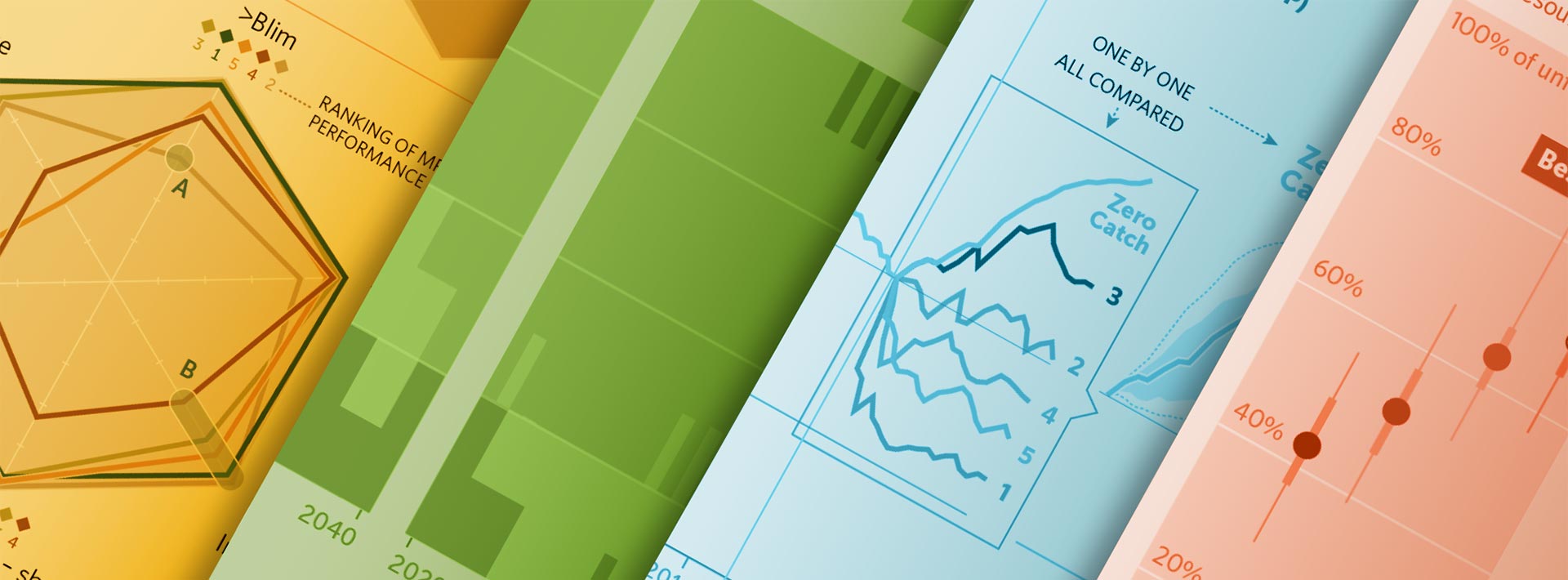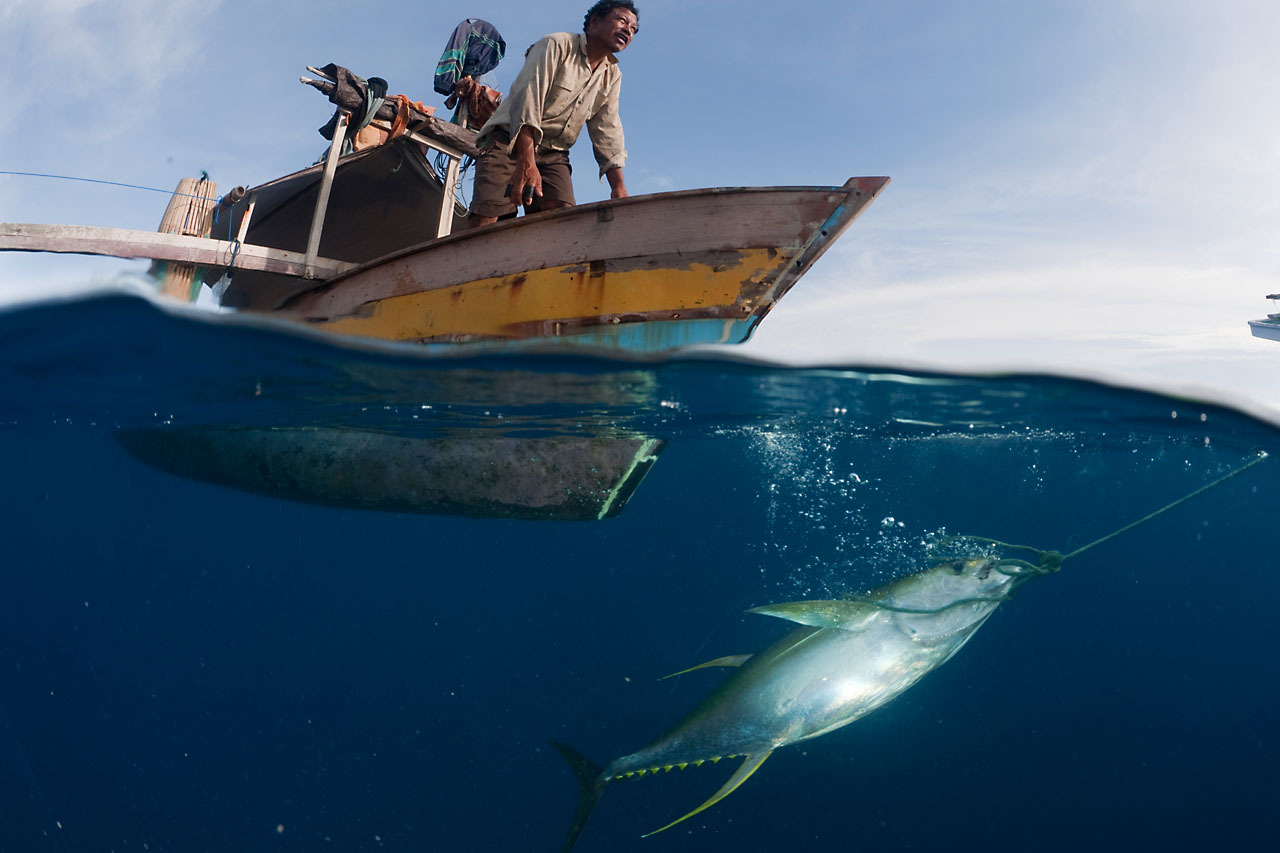
The modelling process for management strategy evaluation (MSE) requires sophisticated technical expertise, but interpreting the results shouldn’t require the same skillset. Carefully designed and annotated data visualizations can give audiences the information they need to select which candidate harvest strategy would best meet their management objectives. Graphical plots, tables, and interactive tools should all be used to suit a diversity of learning styles. Consistency is key, both within and among management bodies, so fisheries managers and stakeholders can become familiar with each presentation style, easing interpretation of MSE results for other stocks. Finally, less can be more. If the entire package of results is available upon request, only the results most relevant to the decision-making process need to be presented.
Click on a thumbnail below to see the full graphic
This package of graphical tools was developed in partnership with an expert scientific communications firm to maximize the data presented while also stressing correct and thorough understanding of the results. Each plot depicts the performance of multiple candidate harvest strategies against pre-agreed management objectives. These plots show results across different dimensions to highlight various elements:
All plots are open source and can be used for individual MSE processes. The R code for each plot can be found in the shiny app, and a host of slide templates are available for showcasing any final results. The Indian Ocean Tuna Commission has also developed a package of plots and a summary table for use in presenting MSE results.
‼️ Webinar Alert ‼️ Join us and our partners on Thursday, October 24th, at 14:00 ET / 20:00 CET / 06:00 Pohnpei for a deep dive into Management Procedures for Small Tunas! 🐟🌍
‼️ Webinar Alert ‼️ Join us and our partners on Thursday, October 24th, at 14:00 ET / 20:00 CET / 06:00 Pohnpei for a deep dive into Management Procedures for Small Tunas! 🐟🌍
🌊 Two RFMO meetings, one critical opportunity! 🦑 Pacific squids play a key role in marine ecosystems and economies. It's time for SPRFMO & NPFC to lead by committing to MPs that ensure a sustainable future. Learn more in our latest blog!

May 3, 2024
harveststrategies.org serves as a resource for fisheries scientists, managers, and other stakeholders, compiling information about how harvest strategies work and how implementing this pioneering management approach can lead to sustainable, profitable fisheries and successful recovery programs for many species around the world. The site is managed by The Ocean Foundation’s International Fisheries Conservation Project with support from The Pew Charitable Trusts and the Common Oceans Tuna Fisheries Project, which is funded by GEF and implemented by FAO.